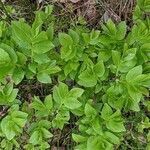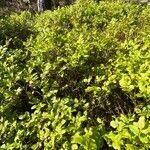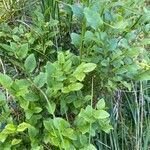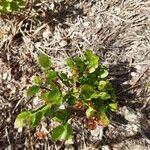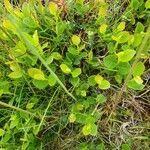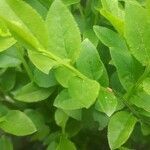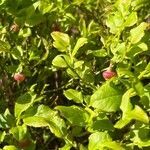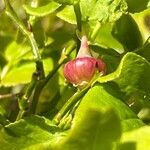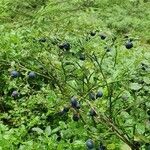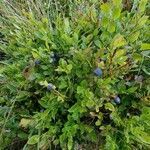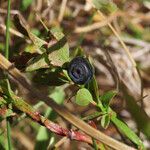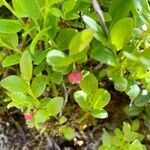Plants forming open colonies, 0.5-12 dm, rhizomatous; twigs green, conspicuously 3-angled, glabrous or minutely puberulent along grooves. Leaf blades bright green, broadly elliptic or ovate, 19-27 × 7-11 mm, margins sharply serrate, surfaces laxly glandular abaxially. Flowers: calyx green, lobes ± recurved (or absent and margins of tube sinuate), deltate, 0.4-0.6 mm, glabrous; corolla pink, cream, or greenish white, globose, 3-5 × 5-7 mm, thin, glaucous; filaments glabrous. Berries purple-black or bluish black, rarely reddish or red, 7-9 mm diam. Seeds ca. 1 mm. 2n = 24, 48.
A small shrubby bush. It loses its leaves during the year. It is round and grows to 45 cm high and spreads 90 cm wide. The leaves are 25 mm long and have fine teeth along the edge. There are hairs on the veins underneath. The flowers are in small clusters. They are green when they open but turn red. The fruit are blue-black berries. They are blue inside. They are 6 mm across. They are edible.
